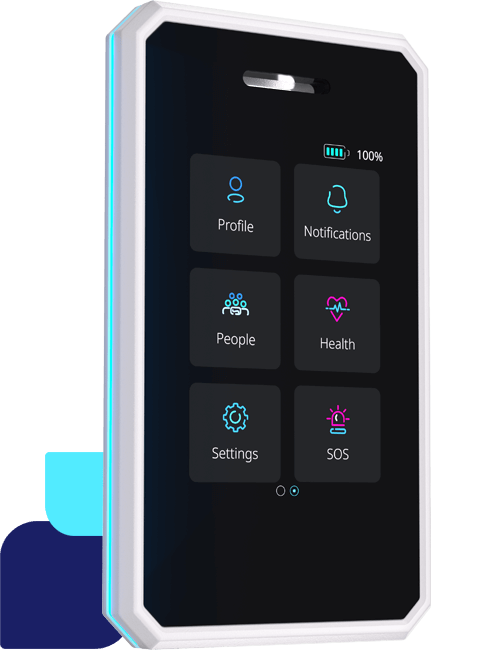Most of us will be familiar with announcements over a public address system, or perhaps you’ve overheard walkie-talkie chatter in a shop or workplace – “Supervisor to checkouts please”, “Employee X, please report to the office”. For people who don’t need to hear them, they’re distracting, irritating, and unnecessary. So, if you’re done annoying your customers, distracting your employees, or shouting out irrelevant information, read on, because we’re going to look at better ways of communicating.
Victims of disruptive voice communication
Customers are usually the first to suffer when it comes to shouting out information over public address systems, especially in retail or hospitality environments. A relaxing shopping trip? Think again, the till operator has just told the entire store that you need a manager to come and sort out the problem that’s occurred processing your items. Not only can this be embarrassing for the individual, its distracting for every other customer who is trying to go about their day.
Patients in healthcare situations can be victims of disruptive voice communications too. Hospitals are usually already noise polluted with machines, and people going back and forth, without adding an extra source of noise through employees talking over voice calls. Patient privacy is difficult to protect when sharing information over voice, as you never know who is listening.
It might also surprise you to learn that radio communications between colleagues aren’t always appropriate for the work environment. Customers certainly won’t appreciate hearing about staff issues, stock problems, or other customer’s problems…
Employees can be victims, too. Over communicating can lead to a drop in productivity, due to time spent listening to messages, which, it turns out, weren’t meant for them anyway. In hazardous environments, it’s an unnecessary risk to health and safety to distract employees from their task – without good reason to do so. Disruptive voice communications can also prevent an employee from taking a break, which is bad for wellbeing.
Many voice systems struggle with accents. A study by USwitch tested 10 commonly used questions in cities across the UK In Cardiff, Liverpool and Glasgow, an error score of over 70 was registered – 7 out of 10 questions asked returned the wrong information. Smart devices powered by Alexa and Google struggled with 23% of UK accents alone. With many frontline workers often coming from other regions of the world, accents can become a huge challenge. When the device doesn’t a simple instruction due to the user’s accent, it can quickly become frustrating for the user.
Managers might find that they get called out the most over loudspeakers. It can disrupt their workflow and processes and prevent them from focusing on what really matters. They’ll also suffer from lack of breaks if they’re constantly being called out to go here, there, and everywhere.
Confidential or sensitive information should never be shared over public address systems, as you can’t control who hears it, and that goes for walkie-talkie style devices as well. Walkie-talkie devices are often unencrypted, so anyone within range could eavesdrop your conversations and you don’t know what they’ll do with what they hear.
Better communication – Connecting direct messaging with RTLS
There are several ways to communicate that can be better than generic voice communication but allow me to tell you about the best choice. Direct text messaging and alerts based on user status and location data. Direct text messages alone are better than generic voice communications, but even better still when connected with location data and availability data. The benefits of targeted communication include increased productivity for employees, less irritation for customers, fewer interruptions to customer service, as well as reduced risk in hazardous environments. To enable a system where location, availability and communication are connected, users would need to carry devices, such as Sense Badges.
By connecting location data with communication, users can message the appropriate individual who is nearest. For example, they can send an alert to the nearest available supervisor/manager for aid. That way, nobody else is distracted, customers/patients aren’t potentially embarrassed, and supervisors won’t miss alerts, as the alert will persist until answered. It also guarantees that only one supervisor shows up, not two, or three, because there’s no way of knowing who else has answered the call if it was announced over loudspeaker. Colleagues can also allow themselves a proper break, by setting the device to do-not-disturb, or by using Sense Badges “break mode”. Taking proper, regular breaks helps improve wellbeing in the workplace.
The more secure nature of this discreet direct text messaging allows users to send information that they wouldn’t be able to share via address systems, or walkie-talkies. Direct text messages can also be audited by managers, if necessary, to establish how events unrolled if a problem occurs, or if someone was asked to do a task and hasn’t done it.
Conclusion
Systems such as Sense allow direct text communications, between the relevant individuals (or teams) who are in the most appropriate location, and available to help if needed. They reduce disruptive voice communications, enable increased productivity, and improve wellbeing (for employees and customers!)
Do you still use loudspeakers in your retail or hospitality environments? It’s time to reconsider your options.







